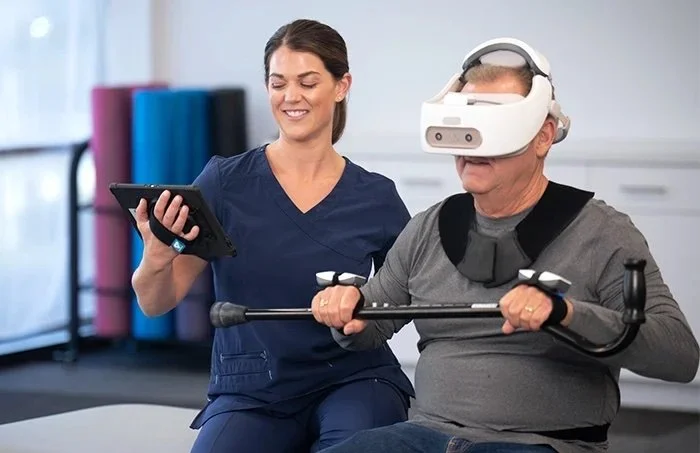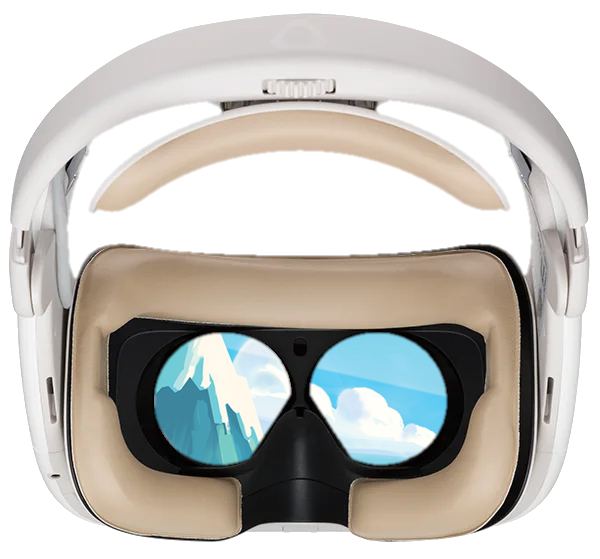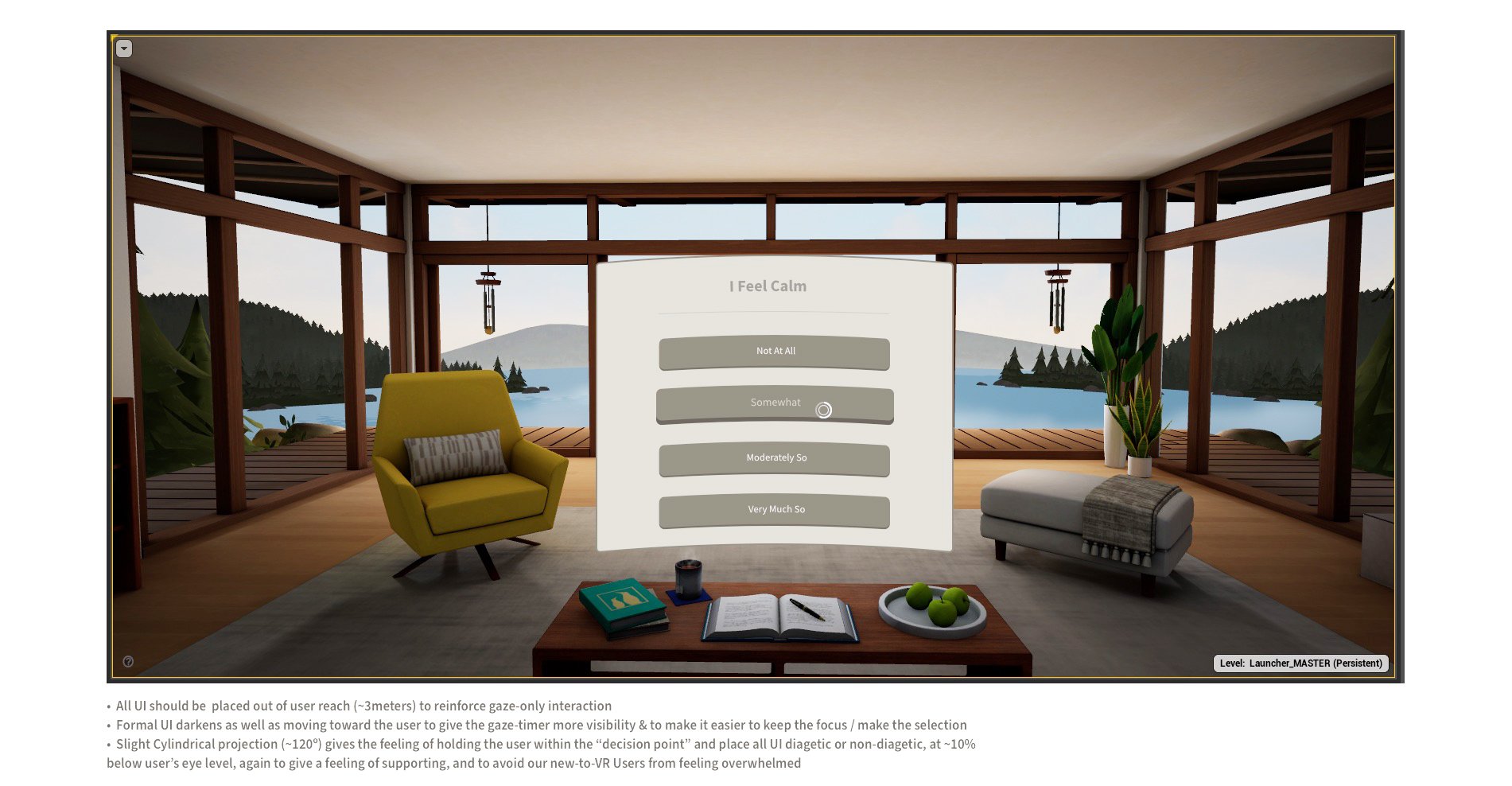Case Study: REAL System
“Two of the largest challenges in (post event) rehabilitation are maintaining patient motivation and lack of engagement,”
Solution: provide clinicians the ability via a tablet-based controller to individualize each therapy session to challenge and motivate their patients while they engage with 1st and 3rd-party developed VR Activities which mimic existing evidence-based ADL PT/OT exercises.
On-Site Customer Visits / Proto Personas
Opportunity: Prior to soft-launch the team had limited metrics and a hypothesized target customer/TAM.
Solution: create Prototypical (hypothetical) personas that embody the Product team’s assumptions & then conduct Site visits to (dis)prove our hypothesized User Needs
Project time: 1 month

B2B Low-Fi Customer Purchase Flow (all use-cases)
Opportunity: Design a proof-of-concept B2C purchase flow & product support site while simultaneously designing a major update to our core product.
Solution: Mentor Junior UX Designer 50% time on loan from another department on the steps of UX design to grow the companies UX capability.
Project time: 6 months
Key Moments / Outcomes:
Under weekly reviews/feedback from me & monthly reviews with the Director of Digital Engagement, he developed low-fidelity wireframes in Miro for all needed User Journeys, which the Junior UX Designer then presented for feedback.
Using low-fi wireframes enabled the contract engineering team to quickly build a proof of concept without additional UI designs, surfacing critical engineering requirements that the cloud services team addressed before front-end development even fully began.
I’m excited to write, the junior UX Designer was promoted the following review cycle in large part based on the work they had done for my project. It is deeply satisfying to have contributed to another individual’s career growth, though it is not always this immediately visible.

Learning: In-House Qualitative Hallway User Testing
Opportunity: We needed to test a software release in confidence before release in a regulated environment and did not have the budget to hire a professional user researcher. We also needed to get the sales team up to speed on the new software prior to release.
Solution: Bring our sales team on-site and conduct a series of informal qualitative user tests over 2 all-day sessions to leverage their deep on-site experiences with our Customers.
Based on my prior experience with the value of doing informal “hallway” or qualitative testing I got approval to run up an in-house user testing session - effectively a giant ‘hallway’ test to onboard sales on the new software. Partnering with multiple product managers from tablet software, to product hardware, to VR content, over two days we wrote and then conducted pre-scripted tests with 8 participants, recorded participant comments and design/product observations, and facilitated a post-test discussion with our sales reps.
Key Results:
Our sales team got to see the new software prior to shipping and both provide feedback, and also able to ask questions of the product development team. They were able to better communicate with potential and existing customers in the field based by drawing on their new, deeper and more nuanced understanding of the product, including the new features.
In partnership with Product we distilled the sessions into key findings (both positive and negative) to guide product improvements. I applied these findings and revised the core flow & UI of the tablet controller to create a very different & well received new product experience resulting in nearly a tripling of sales over the same period with our previous release.
Case Study : REAL Platform SDK 1.0
I believed our customers were buying an immersive healthcare product, not a platform. Therefore, all our VR content needed to use the same UX & UI conventions in order to seamlessly appear as though it had been made by one team, rather than six different studios.
To support this I focused on defining platform-level interaction and platform UI guidelines to develop predictability in the user’s experience of our VR content for the REAL Platform SDK 1.0 & 1.x releases.
Unreal implementation was done by an engineer
Platform VR UI Components
Created a reference mockup of platform UI elements containing engineering details for UI distance, curvature radius and height relative to the users eye.
Key Results: The SDK included a sample scene to provide various teams developing content a single UI model to reference if they needed to create their own custom UI elements. As our End Users are VR novices, I set the eye-line of the UI slightly lower than is common and was placed out of arms reach with slight cylindrical projection so the user would feel gently contained & supported by the appearance of a UI panel, not claustrophobic or surprised.
Platform VR Gaze Interaction
With a lot of content already developed, I felt the best place to start was a second gaze interaction model to support our new platform features. This cohesive platform implementation would be provided to our 2nd partner studios to use in their own apps, replacing the various home-grown platform models each studio had previously.
After speaking with the platform engineer, I created a diagram of the UI states / behavior coupled with the function calls that were referenced in-engine. An engineer handled Unreal implementation using blueprints based off my design documents. My design diagram was added to the SDK along with the reference example.
Key Results: Both our internal development pods and our external contract development studios now had a single interaction model to develop against, ensuring a user would have a more consistent & predictable interaction regardless of which studio had developed the individual VR activity.




